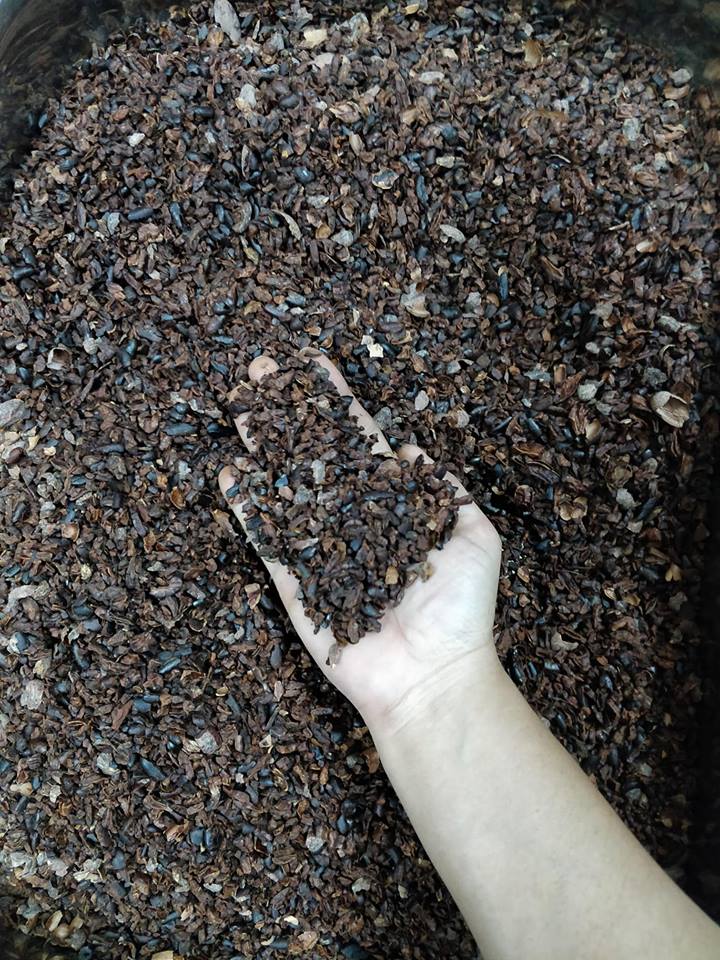
Hey everyone!
Lately, I realized how little (or nothing) a lot of people know about Chocolate. And we as bakers, should definitely put in more efforts to know our ingredients from scratch.
Be it Chocolate or Sugar or Wheat or Fats. We should all take time and effort to gain in depth knowledge about these ingredients which form the Crux of our industry.
Today, it’s about CHOCOLATE.
I always tried my best to study extensively about chocolate as much as I could. And then…
I recently gave myself a gift of knowledge by attending a 3 day session with one of the best chocolatiers in India. L Nitin Chordia and Poonam Chordia from Cocoatrait. And he is generous enough to allow me to write this post for you all.
What is Chocolate?
My interpretation – it is like a seed/nut butter. Just like peanut butter or almond or cashew or walnut butter.
Chocolate making is a long tedious process which has utterly beautiful results. Let me break it down for you in precise steps –
1. In the pictures, can you see a tree with beautiful yellow fruit on it? That’s the THEOBROMA Cacao tree. And those fruits are Cacao Fruits.
The following picture is not my original, it is taken from pmnewsnigeria.com
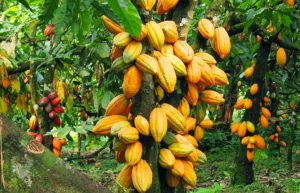
2. Break open the fruit and you see these pulpy white things which is the cacao seeds. This is sweet pulpy and tangy kind of like Lychee or Rambutan. Underneath this white pulp lies our cocoa beans which is the building block of Chocolate.
The following picture is not my original, it is taken from https://www.flickr.com/photos/tijszwinkels/22394774016
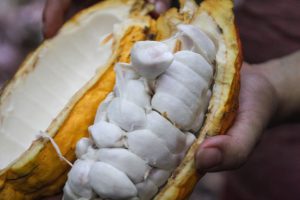
3. These pulpy fruit with seeds are fermented in a wooden box for some days (depends upon the original and flavour one is looking for)
The following picture is not my original, it is taken from The Chocolate Journalist
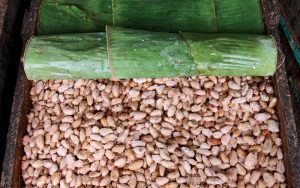
4. After fermentation, it is laid flat on large open fields to sun dry.
The following picture is not my original, it is taken from Raw Cacao Nibs
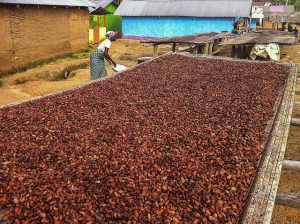
5. After fermentation, it is roasted low and slow and this step determines a lot about the final flavour of Chocolate.
The following picture is not my original, it is taken from Footage Framepool

6. Then the roasted cacao beans are deshelled / deskinned and sorted properly. This is called COCOA NIBS.
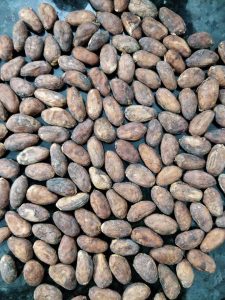
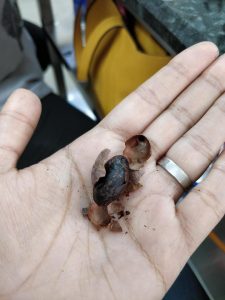
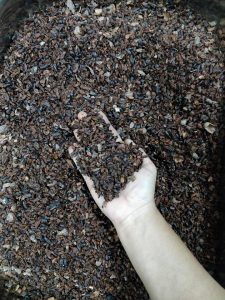
7. Nibs are then set for grinding into a machine where it grids slowly for a long period of time. At this point, you can see the cocoa butter (natural fat of cocoa beans) coming out of the nibs. The ground mixture is 100% Chocolate and is known as COCOA MASS.
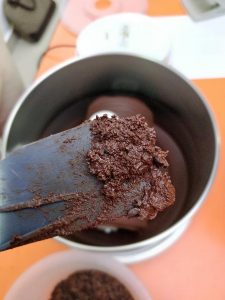
8. This keeps grinding until it is smooth. In between this process, some sugar is added to the cocoa mass according to what percentage of sweetness the chocolatier is looking for. You must have seen 70%, 66%, 54% etc, this percentage refers to the percentage of cocoa mass present in the chocolate. The rest would be sugar. So a 70% Chocolate will have 30% sugar and so on.
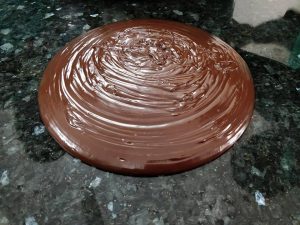
9.1 After this, there are 2 scenarios –
First scenario –
Cocoa mass (without sugar) is pressed to extract the Cocoa Butter which is sold as a separate ingredient. The residue after extraction is what we know as COCOA POWDER. So, truth be told, cocoa powder is a waste product with no flavour.
Companies used to throw it away at first, but then some business genius thought of selling it as Chocolate powder.
Then companies started adding hydrogenated vegetable fats (dalda) to this cocoa powder to make fake Chocolate, or Immitation Chocolate otherwise known as COMPOUNDS or CANDY MELTS.
All the flavour is stripped out of the cocoa powder to extract cocoa butter, hence artificial flavourings are added to Compounds to give that illusion of real Chocolate.
In a lot of countries, Compounds are considered unfit for human consumption and are not even categorized as food. They are usually available at play stores as fake Chocolate for people to practice their skills. Kind of like Playdough.
And in our country, people feed “Compounds” left right and center…. Calling it as “home made Chocolate”. Gosh! ![]() 🙈
🙈![]() 🙈
🙈
9.2 Second Scenario –
The cocoa mass + sugar mixture is now our CHOCOLATE. This is then TEMPERED and made into callets, shards, bars, tablets etc.
Chocolate (cocoa butter) has a complex molecular structure. It comprises of various crystals which are responsible for different properties of Chocolate like sheen, flow, snap, flavour etc.
Beta crystals in Chocolate is responsible for the structure and stability.
When we melt Chocolate, these beta crystals lose their order and go haywire.
Therefore, we temper Chocolate (which is heating, cooling and heating again) to the correct temperature, aligns the beta crystals back in order. This allows chefs to make shards and tablets etc so the Chocolate stays put at room temp without melting.
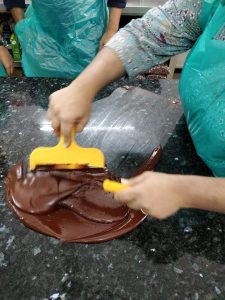
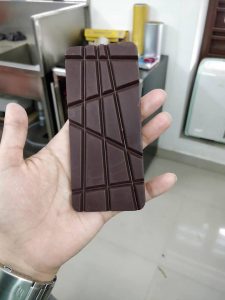
So this is the process of how Chocolate is made from the beautiful cacao pod! Long and tedious but a journey we should all be aware of. I wrote it for you as precisely as possible, but there’s more to each and every steo.
If you wish to gain more knowledge about each step, read good books or contact NITIN for a proper session.
A quick mention about the 3 widely known kinds of Chocolate –
1. Dark Chocolate –
Made with Cocoa Mass + Sugar
2. Milk Chocolate –
Made with Cacao Mass + Sugar + Milk Powder + Cocoa butter (optional)
3. White chocolate –
Made with Cocoa Butter + Milk Powder + Sugar
Chocolates made from scratch (from the beans all the way through) are the ONLY ones that can be called HAND MADE CHOCOLATES. Or more popularly known as BEAN TO BAR Chocolate. You should search about it online.
There are companies and artists that don’t make their own Chocolate but buy couverture (real Chocolate) and temper it then make bon bons or tablets etc with flavours. This kind of product should be called HAND CRAFTED not Hand Made. Because you’re not really MAKING anything, you’re just CRAFTING what’s already been made.
There are people (majority in India) who melt and mould Compounds. This is not considered as any category. It would be wrong to call it Chocolate.
People always say “CLIENTS DON’T BUY COUVERTURE CHOCOLATE SO WE HAVE TO SELL COMPOUNDS”.
My suggestion –
People don’t buy couverture, because they have no knowledge of what chocolate really is. And if bakers don’t educate them, who will?
Will you ever find people going to a jewellery shop and asking for GOLD or DIAMOND for 100/- a kilo?
No!! They won’t, because they know the value of these things.
At least when people buy artificial jewellery, they know that they’re buying IMMITATION. And they’re okay with it!
So I think people should know while buying artificial chocolate, what they’re really getting as well. And after that, the decision is theirs.
But education is the only way we can make the shift. And it’s us bakers and chefs who has to bear the responsibility.
So first educate yourselves and then educate everyone around you!